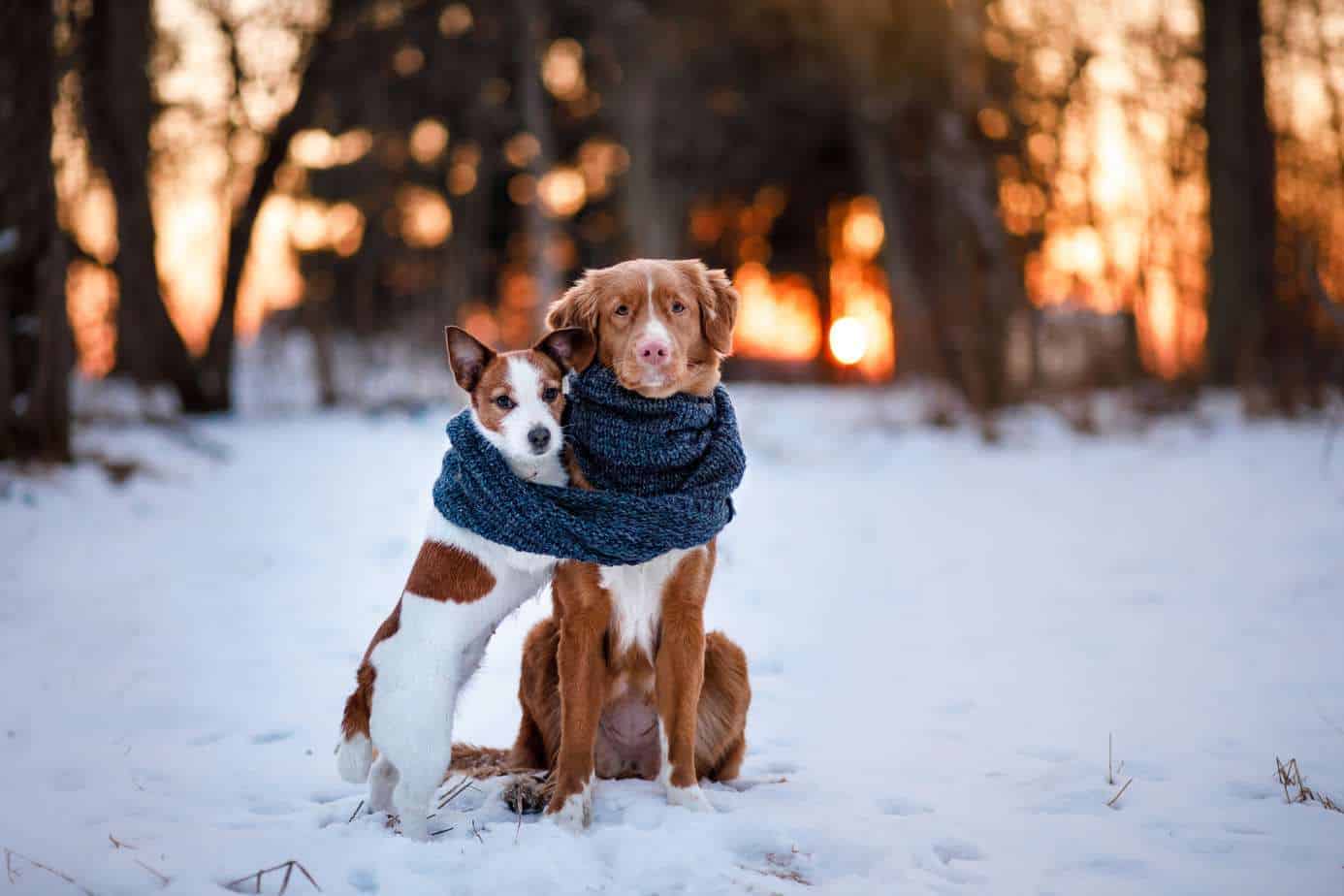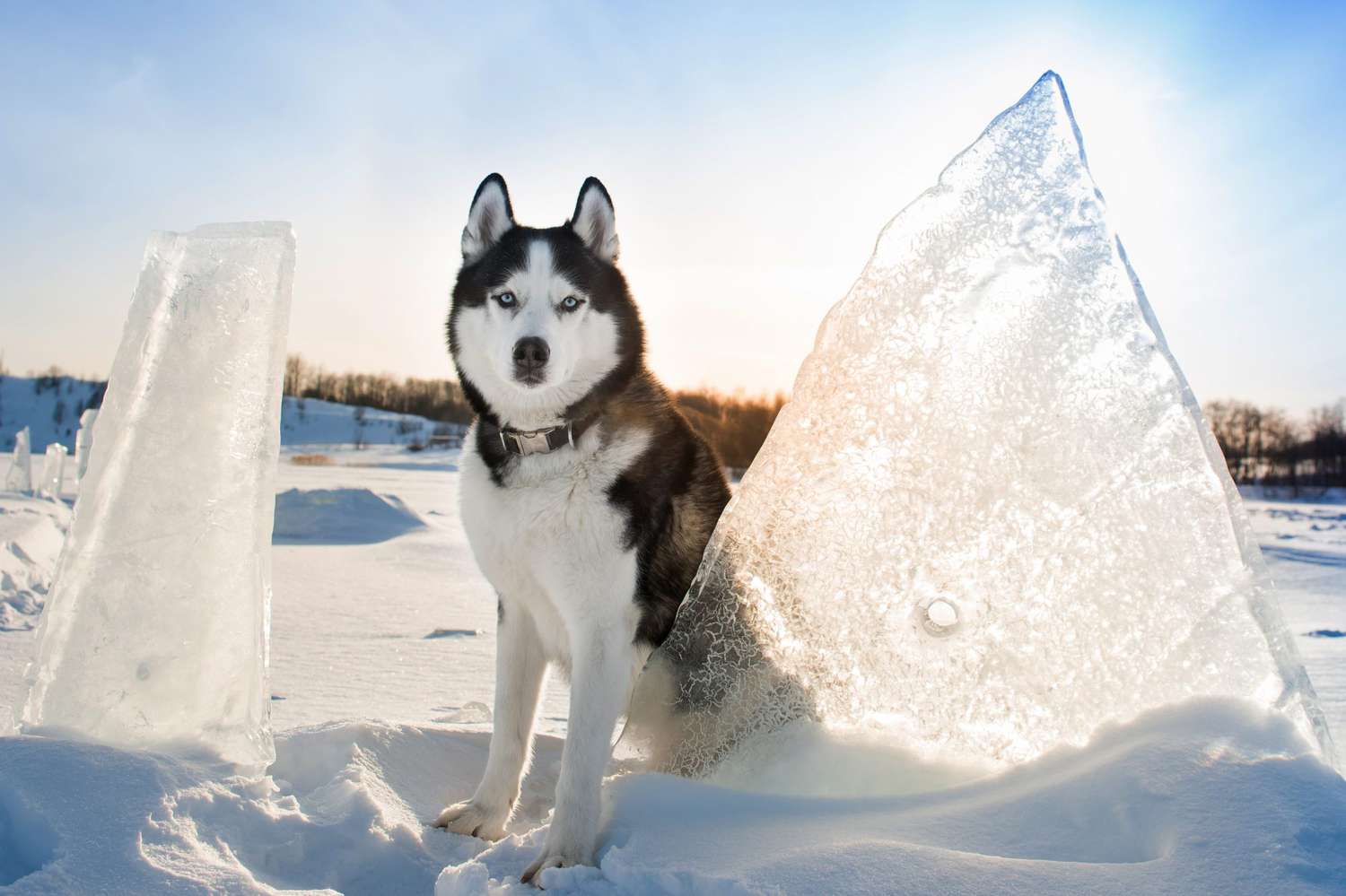Keeping Your Dog Safe and Healthy During the Cold Winter Months

About Various Weather Conditions
Besides temperature, there are other weather factors that can negatively affect your dog. These include the following.
Wind chill:
For those of us in northern climates, wind chill is a part of our daily winter lives. It is also a part of the life of our dogs. Cold temps coupled with winter winds can create an overall perilous situation for you and your dog.
Precipitation
Heavy, wet snow and rain are simply uncomfortable and can result in both of you catching a nasty chill. On the other hand, there is nothing more lovely than walking through the woods when light, fluffy snow is falling.
Gray days
A temperature of 32 feels the same, whether the sun is shining or not, right? Wrong! A cloudy, gray day at 32 degrees will feel markedly colder than the same on a bright, sunny winter day.

About Protection
So, what are the rules of the winter road to keep your dog protected? Read on: Limit the time he spends outdoors – shorter walks, quicker potty breaks in the yard, etc. Limit baths: 1 or 2 each winter is plenty. Dress her up: Purchase a coat or sweater to wear when outside. Consider dog boots: Many dogs won’t tolerate this, but if yours will, they provide excellent foot protection.
It’s here — winter, the season of ice, snow, wind, and endless gray skies. But with proper protection, you and your dog can enjoy all the best of what winter has to offer. The fact is that being outside is important for a dog’s health and well-being. But the question is how cold is too cold, how snowy is too snowy, and how wet is too wet?

About Winter Temperature
Different dogs have different tolerances for cold weather – think Huskies and Malamutes that thrive in the cold, while poor short hair breeds like Boston Terriers and Greyhounds shiver when you might think it’s a balmy winter day. In addition, the smaller the dog, the less able to deal with winter weather, while bigger, hairier breeds do much better. Here’s the general rule: When the temperature drops to 45 degrees, keep a close eye on your dog when outside. At this temperature, smaller, older, and unhealthy dogs may begin to shiver or tremble slightly. When the temperature reaches 32 degrees is when many dogs will start to whine, cry, shiver, and refuse to move. Once the temperature drops to 20 degrees or below, true danger, such as hypothermia or frostbite, can set in.
About Other Factors
Moving: A dog moving briskly generates its own body heat Coat type: Dogs with double-layered coats adapt most easily to cold conditions. Coat color: This one may surprise you – darker coats absorb heat from sunlight, keeping them warmer than dogs with lighter-colored coats. Size: Simply put, small dogs just don’t have enough skin to give them insulation against the cold. Weight: Be careful with this one> Just like us humans, the more body weight, the warmer in cold weather. Same with your dog but being overweight is not the place you want him to be. Cold is cold, right? Wrong. The first cold of the season makes all creatures feel colder than the same temperature later in the season. Older and Unhealthy Dogs: This is no surprise, for sure. Neither older nor unhealthy dogs should be exposed to cold temperatures at all.
About What Happens in the Cold
Arthritis: Cold weather can exacerbate the pain for a dog with arthritis. Hypothermia: Hypothermia can range from mild to severe with symptoms that include shivering, weakness, stiffness, and breathing irregularity. Hypothermia warrants an immediate call to the vet. Frostbite: The most likely places a dog can get frostbite are the bottom of its paws, the ail, or the ears. Salt: Avoid walking your dog on salted areas, but if that is unavoidable, be sure to wipe his paws off when you return home.
